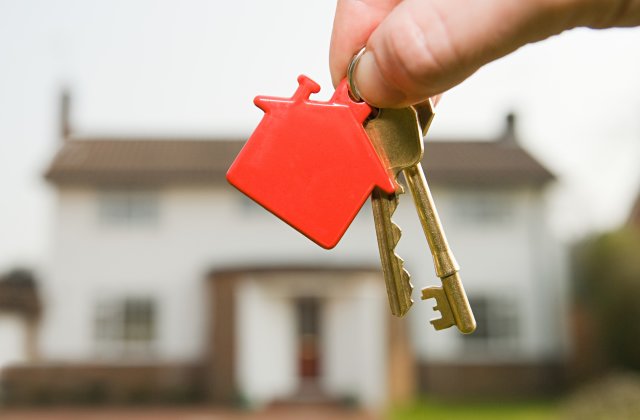
A 20% Down Payment on A home was once the benchmark, but many buyers can’t or choose not to come up with this amount. One downside of skipping a traditional down payment is that you’ll owe private mortgage insurance, or PMI.
Here’s an introduction to PMI and why you might need to plan to pay for it each month.
What Is Private Mortgage Insurance?
PMI is an insurance policy that protects the lender in case you default on your mortgage.
“Mortgage insurance is generally required when the loan-to-value ratio is higher than 80%,” says Ron Haynie, senior vice president of mortgage finance policy for the Independent Community Bankers of America.
For a home purchase, that means you’re putting down less than 20% of the appraised value at closing. You’ll owe PMI when you’re refinancing if you have less than 20% equity in your home.
How Much Is Mortgage Insurance?
PMI cost depends on several factors, including your credit score and how close you are to 20% ownership. Typically, the stronger your credit score and the larger your down payment, the better your PMI rate.
The rate is also usually lower if more than one borrower is on the loan and if the home you’re buying will be your primary dwelling.
Expect to pay from 0.55% to 2.25% of your loan amount for your annual mortgage insurance premium. For a $250,000 mortgage, that could be about $1,400 to $5,600 yearly. That’s about $100 to $450 per month.
You’ll most likely pay PMI in monthly installments that are rolled into your mortgage payments, but you may have the option to make one yearly lump-sum payment.
If you’re concerned that your PMI premium is too high – say, it increases dramatically when you refinance compared with your original loan – ask whether your lender can offer a better rate.
In a bit of good news, you may not owe PMI if you finance a home using a government-backed loan, such as a Department of Veterans Affairs loan.
How Can You Avoid PMI?
Here are some options if you’re looking to avoid the costs of PMI:
- Save up 20% for a down payment. Or make sure you have 20% equity in your home if you’re refinancing, which almost guarantees you won’t have to pay for PMI.
- Borrow money to hit that 20% down payment. Borrowers sometimes opt for a piggyback loan, also known as an 80-10-10 loan, says Bill Banfield, executive vice president of capital markets for Quicken Loans. This type of loan lets you buy a home with two mortgages totaling 90% of the price, plus a 10% down payment.
- Talk with your lender. If you have an excellent credit score and loan application, your lender might be willing to waive PMI. Bumping up your credit score can make a big difference in your PMI premium if you do wind up paying it, Banfield adds.
- Find a conventional loan that doesn’t require PMI. But this type of loan generally includes lender-paid mortgage insurance and charges slightly higher interest rates to compensate.
- Look for special lending programs. If finding an affordable loan is proving difficult, look beyond traditional banking institutions. You may qualify for government programs such as VA loans, which also has refinancing options.
How Can You Get Rid of PMI?
You can take steps that may allow for the early removal of PMI from your loan. Here’s what you can do:
Keep track of your LTV. Talk with your loan servicer if your LTV is approaching the 80% mark. That means you have 20% equity.
“Servicers are required by law to drop borrower-paid mortgage insurance coverage when the LTV based on amortization drops to 78%,” Haynie says. “However, a borrower can request the coverage be dropped based on a current appraisal if the LTV is 80% or less.”
Show that you’re a model borrower. You will need a strong payment history, and you might need another home apprisal. It can confirm that the property hasn’t dropped in value from the original appraisal and that you don’t have any second liens, or loans that use your home as collateral.
Accelerate your mortgage payments. Add some extra cash to each of your principal payments to build home equity faster. Not only can you reach 20% equity more quickly but also work toward paying off your mortgage early. But first, check whether you’re subject to a prepayment penalty.
Get the latest data on your home’s value. If you suspect that your home’s value has increased significantly and an updated appraisal supports this, you will have more home equity. You will likely need to pay for the new appraisal yourself in these situations, Haynie says.
Consider refinancing. With interest rates at historic lows, refinancing could save you a lot of money over the lifetime of your loan, even if it doesn’t immediately eliminate PMI. Because refinancing almost always includes an appraisal, you could also find out that you have more equity than you realized.
Know the rules. Borrowers have to wait at least two years after taking out a loan before PMI can be dropped.
Do the math to find out how long it will take to build sufficient equity to cancel your PMI. You should also receive an annual PMI statement from your loan servicer, which discloses your right to cancel or terminate PMI, along with contact information to remove it.
Should You Choose PMI?
Sometimes picking a loan with PMI can be for the best, even if you have saved 20% for your down payment, Banfield says.
“What if you just put 10% down, pay the mortgage insurance and then have this extra money in your bank account in case there’s an emergency?” asks Banfield.
This will leave money in the bank for surprise home repairs and even decor or furnishings. “There are some really good reasons to think about putting less than 20% down,” he says.











